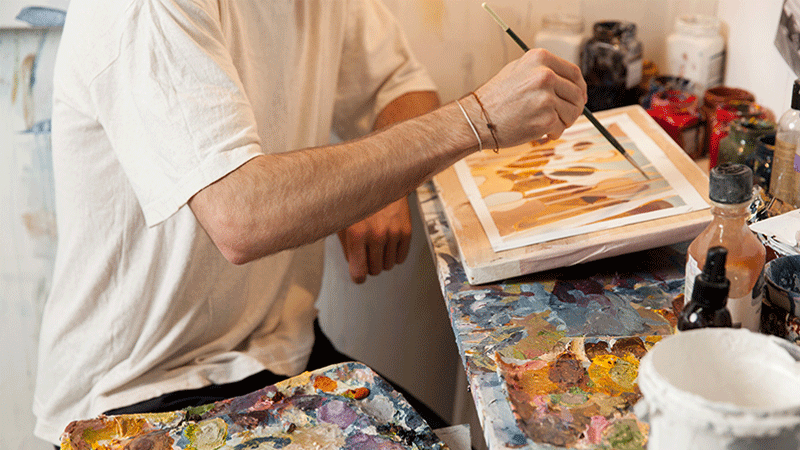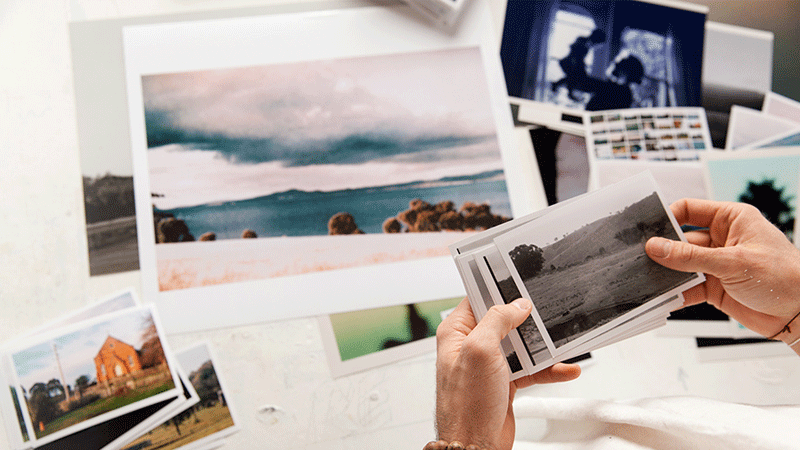Max Berry – ‘The Inwardness of Place’
In his latest collection of work, Berry presents place as something shaped by a person's movement and affective counters within it.
What constitutes place? Across Max Berry’s work to date, place has emerged as a defining interest. In this, his latest solo exhibition, place is again evoked through the exhibition’s title, as well as through the works predominant subject matter, landscape. However marking a departure in approach to his previous work, Berry’s interest in landscape has turned from its fantastical imaging to its direct experience, with the artist venturing out of his studio on excursions to locations throughout Australia. These have included Hill End and the Colo Valley in inland New South Wales, and further south to Tasmania’s hinterland.
Across the exhibition, Berry has distilled something of these locations into paintings that are vivid in colour and decisive in stroke. Be it a view of rolling hills, an immense horizon line, a solitary tree, a river or a dam, each painting offers the viewer a vignette, an invitation to experience a moment in time and space, and to position themselves where the artist once stood. Upon viewing these landscapes what quickly becomes noticeable however is that they are largely unpopulated. But while people do not abound they are not inhuman. A tree for example might ask for greater attention announcing itself as a prominent character through a stroke that intensifies its form, while the presence of a road might clarify the painter’s point of interest in a composition, or the shade of the sky’s hue have been given a concentrated vibrancy to evoke its emotional impact.
Significantly for this collection of works, Berry first translated his experience of these places through photography, capturing a days shifting light or a detail that caught his interest through the rich impression of film. Then back in the studio, the resulting photos were used to reinterpret these moments through the poetic potentials offered by paint. Like flipping through the pages of a photo album, the works in The Inwardness of Place are decidedly nostalgic and sting with emotion, with each work seeming to encourage a particular quality or feeling that lingers and marks its own time as it is viewed. This may suggest that the answer to what constitutes place exists in each person’s encounter, residing within.





As an Italian immigrant, who came to Australia as a young boy, Zofrea’s understanding and connection with the Australian landscape has been a lifelong journey....
For a short time in the early seventies, boring old Sydney Town had a place to go that fitted Bruce’s vision. After living and successfully...
The Wama Foundation has nurtured significant momentum for its ambitious NCEA project over the past decade. In 2015 the foundation engaged Jan van Schaik, co-founder...
At his Leichhardt studio, Mason Kimber shows me a cache of photographs taken of a Perth nightclub, owned by Kimber’s father, in the 1980s and...
Through a complex and nuanced investigation of movement and time, the photographic work of U.S. still-and-moving image artist Sam Contis, seductively unfolds across distinct landscapes....
The year 2024 is a special year as Australia somewhat confidently readies for the approaching Olympic Games in Paris. The national society feels it has...
You studied with the Polish born painter, Professor Maximilian Feuerring from 1956 to 1959. Was that at an art school? I was eighteen and I...
Presenting an eighty-year art history of sixteen east Arnhem Land Yolngu clans represented by the Yirrkala Art Centre Buku Larrnggay Mulka, it recalls the Art...
Divided into ten thematic sections, the curatorial brief (according to the NGV’s online publicity) is to place “emphasis on the thoughts and observations of the...